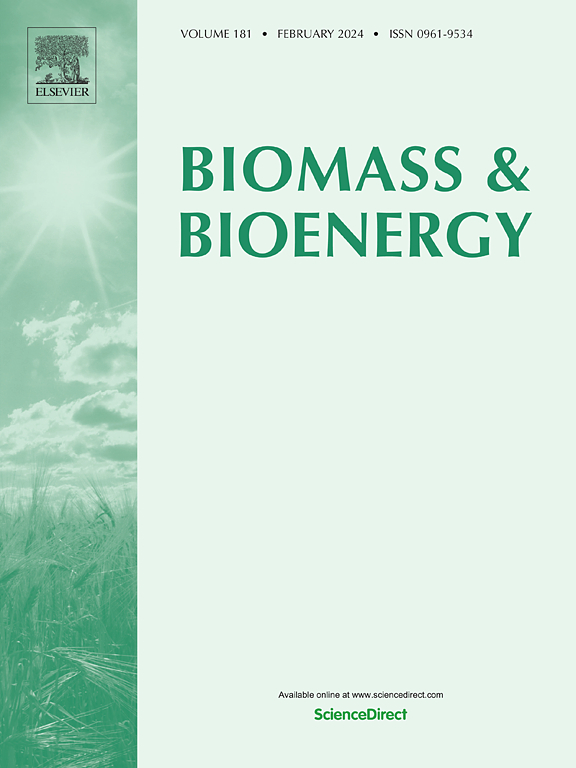Utilization of locally sourced waste fats for biodiesel production: Experimental characterization and environmental life cycle assessment
IF 5.8
2区 生物学
Q1 AGRICULTURAL ENGINEERING
引用次数: 0
Abstract
This study presents the production, chemical characterization, and life cycle assessment (LCA) of biodiesel derived from various local waste feedstocks using experimental setup. Biodiesel was produced via transesterification in a 50-L batch reactor using oils sourced from a five-star restaurant (A), three-star café (B), rancid palm oil (C), and chicken feather oil (D). Fourier Transform Infrared Spectroscopy (FTIR) was used for identification of functional groups, while gas chromatography-mass spectrometry (GC-MS) analyzed fatty acid methyl ester (FAME) composition, revealing key variations such as Hexadecanoic acid (C16:0) and Octadecenoic acid (C18:1). Type A biodiesel exhibited the highest saturation, while Types B and C contained more unsaturated FAMEs, influencing their heating values. Conversion efficiencies were significantly influenced by the acid values of the feedstocks, with a maximum yield of 85 % achieved for a sample with an acid value of 3.5 mgKOH/g and a heating value of 35.8 MJ/kg. LCA performed using Simapro V9.5.0.2 demonstrated that biodiesels from Types A, B, C, and D reduced carbon footprints by 70 %, 64 %, 63 %, and 65 %, respectively, compared to fossil diesel. Feedstocks with lower free fatty acid (FFA) levels resulted in lower environmental impacts, while extensively reused cooking oils with higher FFA values contributed to increased carbon footprints. This study underscores the potential for scalable biodiesel production from waste resources, aligning with global and regional sustainability goals.

求助全文
约1分钟内获得全文
求助全文
来源期刊

Biomass & Bioenergy
工程技术-能源与燃料
CiteScore
11.50
自引率
3.30%
发文量
258
审稿时长
60 days
期刊介绍:
Biomass & Bioenergy is an international journal publishing original research papers and short communications, review articles and case studies on biological resources, chemical and biological processes, and biomass products for new renewable sources of energy and materials.
The scope of the journal extends to the environmental, management and economic aspects of biomass and bioenergy.
Key areas covered by the journal:
• Biomass: sources, energy crop production processes, genetic improvements, composition. Please note that research on these biomass subjects must be linked directly to bioenergy generation.
• Biological Residues: residues/rests from agricultural production, forestry and plantations (palm, sugar etc), processing industries, and municipal sources (MSW). Papers on the use of biomass residues through innovative processes/technological novelty and/or consideration of feedstock/system sustainability (or unsustainability) are welcomed. However waste treatment processes and pollution control or mitigation which are only tangentially related to bioenergy are not in the scope of the journal, as they are more suited to publications in the environmental arena. Papers that describe conventional waste streams (ie well described in existing literature) that do not empirically address ''new'' added value from the process are not suitable for submission to the journal.
• Bioenergy Processes: fermentations, thermochemical conversions, liquid and gaseous fuels, and petrochemical substitutes
• Bioenergy Utilization: direct combustion, gasification, electricity production, chemical processes, and by-product remediation
• Biomass and the Environment: carbon cycle, the net energy efficiency of bioenergy systems, assessment of sustainability, and biodiversity issues.
 求助内容:
求助内容: 应助结果提醒方式:
应助结果提醒方式:


